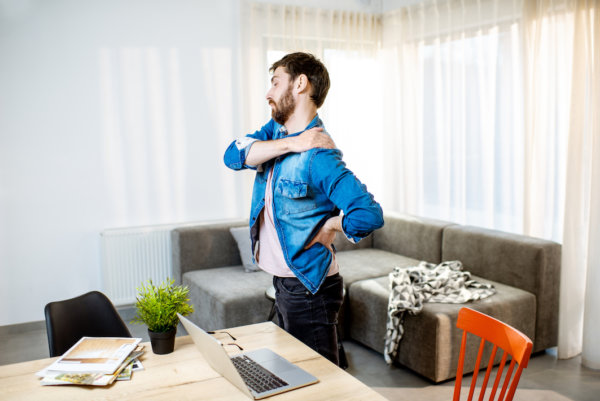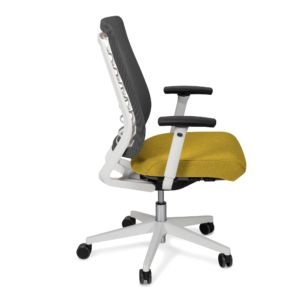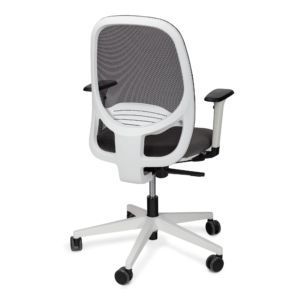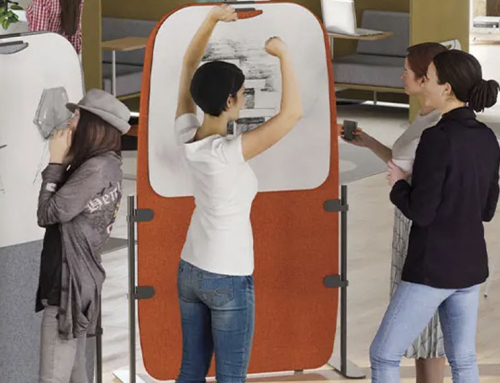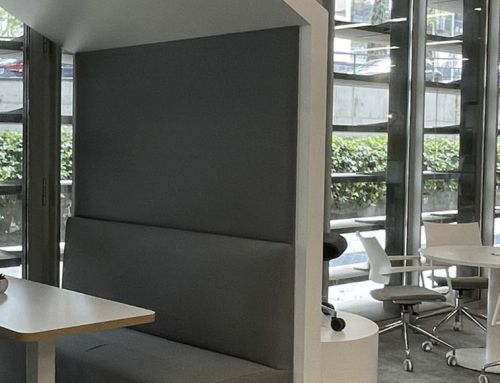A study by the Technical University of Denmark groups the advantages of teleworking into three labels called conciliation, work efficiency (less time is wasted in meetings and useless tasks, and you can focus on work without interruptions) and work control (you can control your day).
The drawbacks of teleworking are summarized in limitations of the “home office” (less social life and exercise), uncertainties of work, (not understanding the tasks, lack of digital skills…) and inadequate tools.
Added to these three disadvantages is a more serious one, its negative impact on health, if the right conditions are not met. A recent study by the World Health Organization and the International Labor Organization has shown that poor planning for teleworking has negative physical and mental consequences.
Negative effects of teleworking on our health
There are a series of signs that can indicate if teleworking affects our health, such as: weight gain -due to less physical activity-, difficulty disconnecting from work, a greater sense of isolation, anxiety, problems falling asleep, stress… which are intensified by a lack of digital skills in certain types of more analog workers.
And of course, back, neck or joint pain, since the work space in the office is not the same as the furniture in our home.
Tips to alleviate the negative effects of teleworking
To avoid these problems associated with working from home, it is important to establish a series of routines. For example, move as much as possible and do not sit for more than 30 minutes at a time: take breaks of about two minutes with light physical activity, such as walking, and alternate 30 minutes sitting with 20/30 minutes standing. For example, phone calls can be used to stand up or walk.
In this sense, height-adjustable tables that allow us to alternate working sitting and standing are totally advisable.
To rest your eyes, it is recommended to practice the 20-20-20 rule, that is, stop looking at the screen every 20 minutes and change your gaze towards an object that is about six meters (about 20 feet) away for 20 seconds.

Furniture, a key element in our health
A good equipment of the work space is decisive to combat the negative effects of teleworking on the health of the worker. Working from the sofa may seem comfortable, but it prevents you from having a correct posture that takes care of the health of your back and neck.
Sitting correctly is the most important point in the work of preventing health problems. Sitting for several hours a day can cause a host of problems, including back pain, so the right chair is essential.
A comfortable position thanks to ergonomic chairs can make or break the comfort of an ideal work environment.
In the case of the ideal office chair for telecommuting, the most recommended is an ergonomically designed operative chair that follows the movement of the body. 60% of ailments related to sedentary work are caused by a poor choice of chair. For a chair to be healthy and not cause these problems, its design must respond to ergonomic criteria and not just purely aesthetic ones, so that the user finds in the seat the support they need to maintain a correct and healthy posture.
- Hara chair
- Like chair
The highest frequency of complaints from teleworkers regarding their chair is given in the availability of the armrest. Second (in order of frequency of complaints) is the comfort of the backrest. More than 30% of office chair users state that they do not use the chair back because they find it uncomfortable.
It is very important to replace static postures with sitting in active movement. To do this, the back of the chair must not be excessively rigid. It has to allow some flexibility, moving at small angles about a fixed position.
Remember that to be seated correctly -as we mentioned in this previous post– the thighs have to be parallel to the ground and the back supported by the backrest. Forearms horizontal to the ground and elbows bent at an approximate 90º angle, with the keyboard, mouse and work surface at elbow height.
Our ideal position for telecommuting
80% of teleworkers prefer an ergonomic chair, which allows them to sit in a healthy way, than an aesthetic chair in harmony with the decoration of their home.
Teleworkers consider it essential that the work chair has different adjustments to adapt to them: seat height adjustment (the feet must be fully supported on the floor), backrest height adjustment (to allow correct lumbar support), armrest height… And a Synchro system, which allows the backrest to tilt in a synchronized movement with the seat, favoring the natural movement of the body and preventing us from spending many hours in the same position.
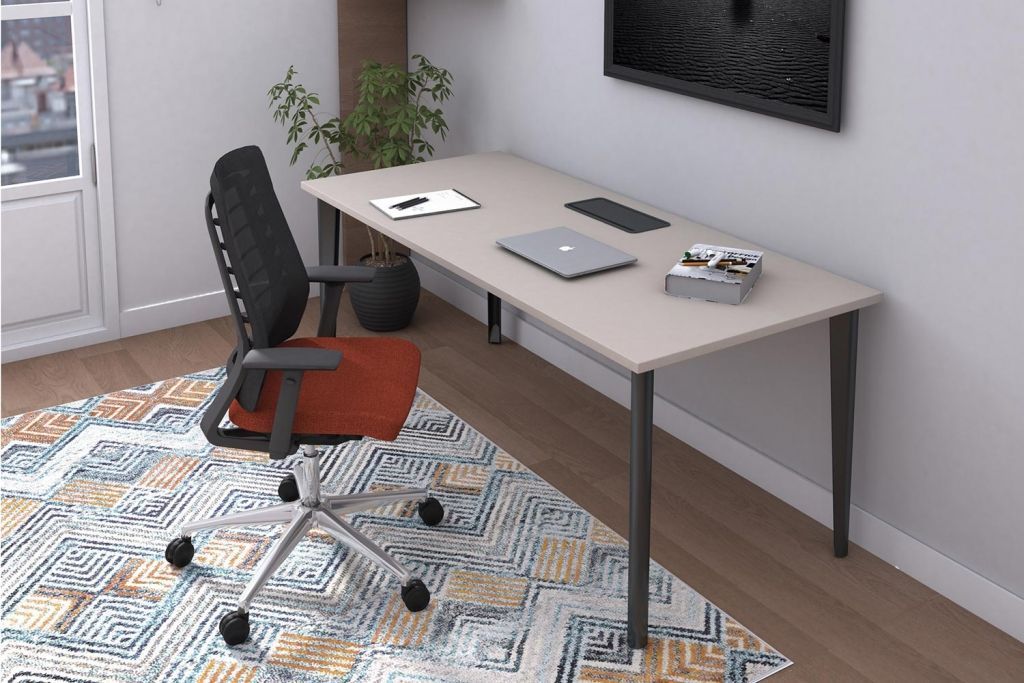
Regarding the table, it is recommended that it have a minimum length of 120 cm. You must have enough space to allow you to move your legs and collect the wiring.
It is also important that its surface is matte, to avoid reflections and that it has sufficient depth to place the computer equipment, guaranteeing the proper posture.
Light colors and natural materials are also recommended as they relax us and facilitate concentration. For 60% of the teleworkers surveyed, the most important thing about a table is connectivity and its ergonomics.
Lighting and temperature are two other essential factors, as well as keeping the work area tidy to avoid distractions. Poor lighting can reduce our energy, cause eyestrain and headaches.
We can improve the quality of the air with a purifier or by placing plants in the work space. There are plants that are exceptional air purifiers, hence the growing interest in biophilia in office interior design. And not only do they serve to purify the air, but they help create a more welcoming and even productive environment.
“Healthy men in a healthy body”
A curious study from the Sydney University of Technology provides original insights into mental health during the Covid-19 pandemic. For example, working from home in your pajamas during lockdown has not been associated with lower productivity, but it has been associated with worse mental health, including higher rates of anxiety and depression.
Working alone can create anxiety and increase the risk of falling into despondency. Therefore, just as we must take care of our body, we cannot forget our mind. It is essential not to lose contact with colleagues, in any way. According to psychologists, a good trick can be to write down three positive things or three achievements of the day every day.
To maintain balance, it is essential to establish boundaries between the personal/domestic and the professional. In the first place, maintaining a separate and delimited space to work.
It is important to follow some guidelines. For example, build time routines; define our “rock task” each day (it is the one that cannot be moved from the schedule; recognize our chronotype (the time of day when you have the most mental energy) and perform the tasks with the greatest cognitive demand adapted to our energy level.

